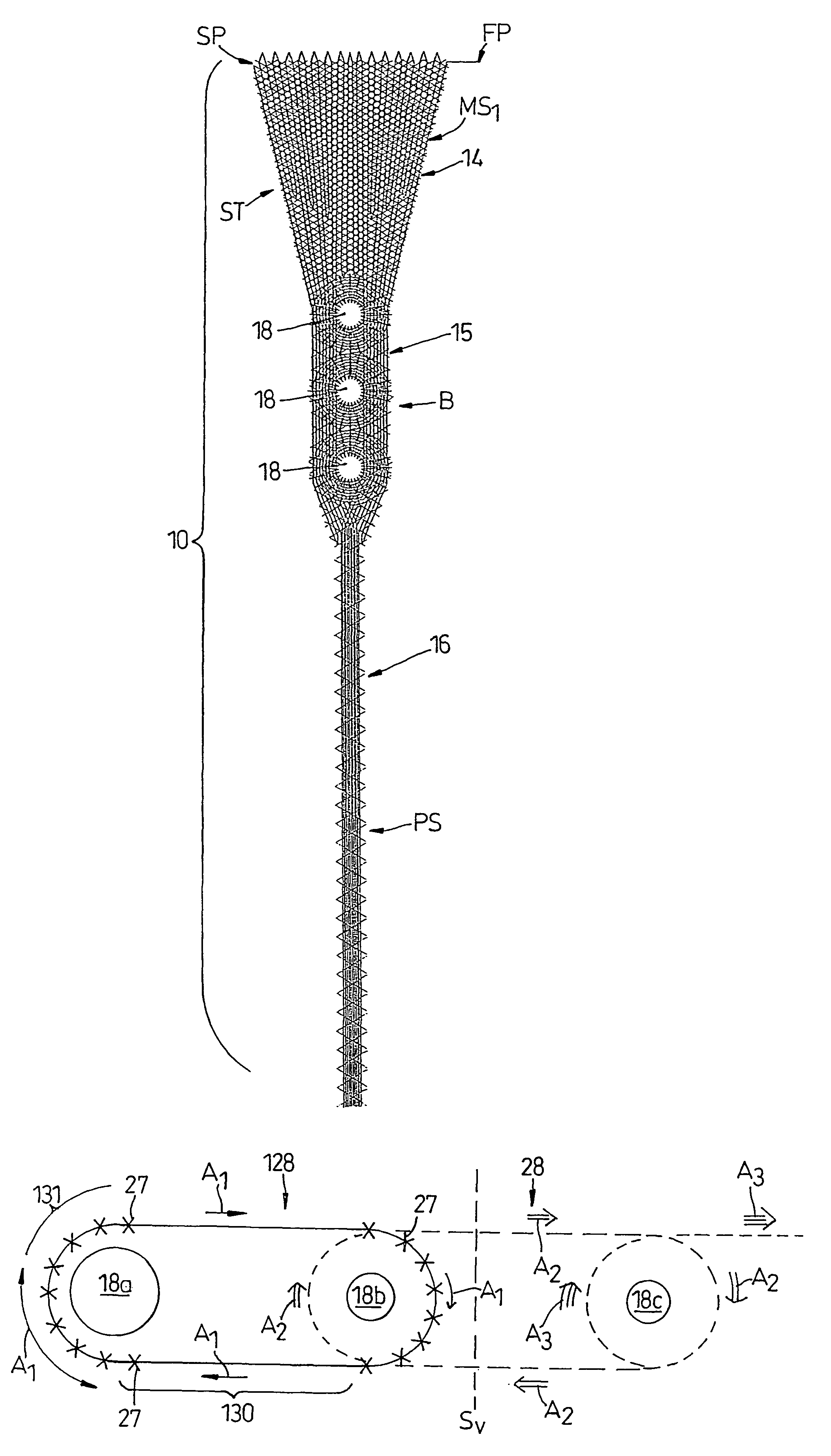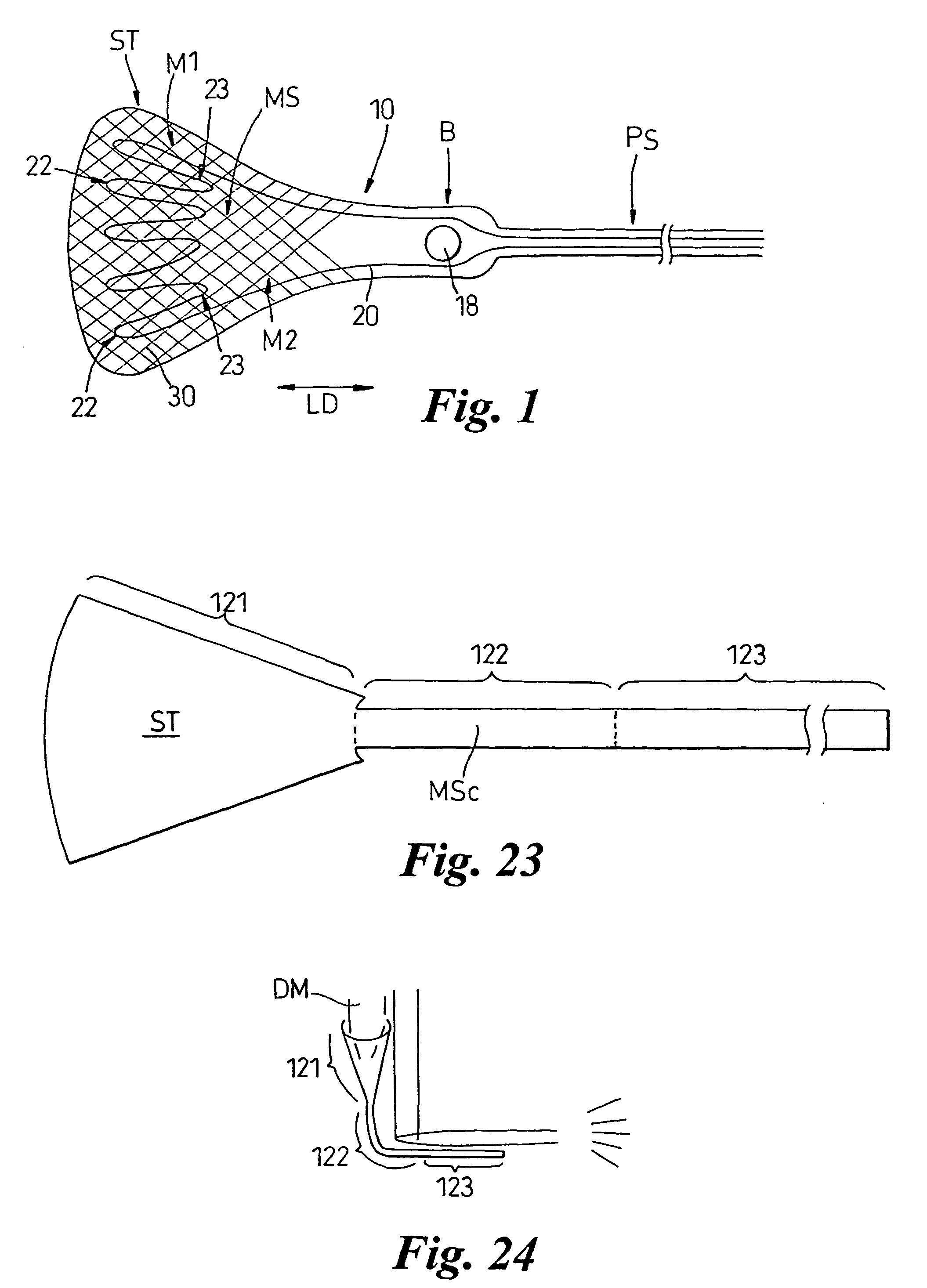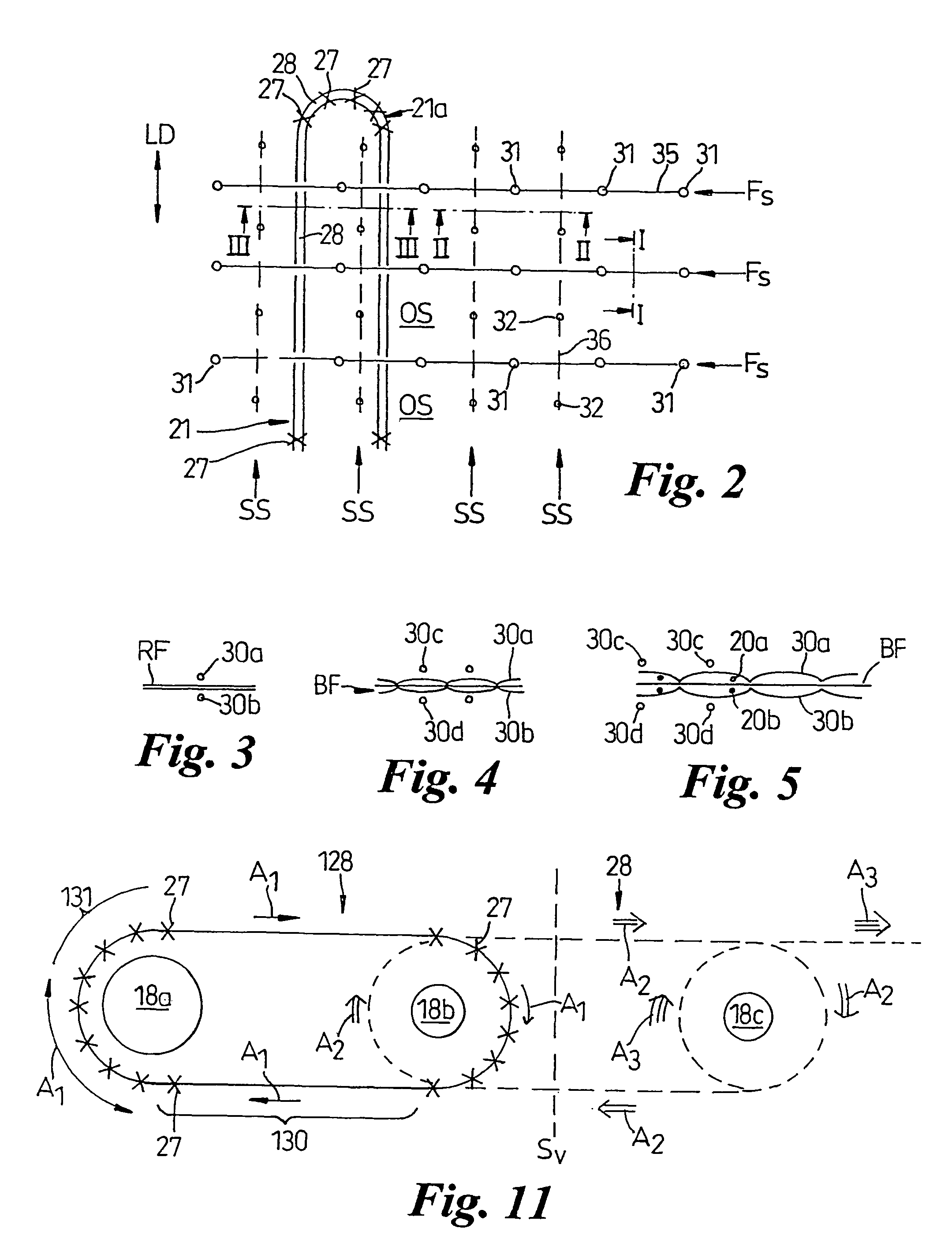Textile prosthesis
a technology of prosthesis and woven fabric, applied in the field oftextile prosthesis, can solve the problems of distorted weave, distorted woven structure, and change of the fixation point on the fabric, and achieve the effect of less structural distortion
- Summary
- Abstract
- Description
- Claims
- Application Information
AI Technical Summary
Benefits of technology
Problems solved by technology
Method used
Image
Examples
first embodiment
[0080]Described below, by way of example, are various specific embodiments. In FIG. 8 there is shown a first embodiment which is a surgical implant suitable for the repair of the shoulder of a human being, intended to reinforce the natural, but damaged tissue.
[0081]The implant comprises a body 10 which is generally planar and includes a first discrete body portion 14, a second discrete body portion 15 and a third discrete body portion 16.
[0082]The first body portion 14 defines an anchorage body portion ST, comprising a mesh-like structure MS1 formed from binding yarns 30 in which load bearing yarns 20 are trapped. The anchorage portion ST is intended to be sutured to the natural tendon material forming the rotator cuff of the shoulder.
[0083]The body portion 15 defines an anchorage body portion B and preferably includes three apertures 18 each of which enable a bone screw to pass therethrough for securing the body portion 15 to the humeral bone. Three apertures 18 are provided in ord...
embodiment 80
[0117]The embodiment 80 illustrated in FIG. 16 is a multiple ligament reinforcement prosthesis. Prosthesis 80 includes three fan shaped anchorage body portions ST1, ST2, ST3 defined by body portions 81, 82 and 83 which are joined together by a connecting body portion 84.
[0118]The body portions 81, 82 and 83 are of a similar structure to body portions 61, 62, 63 described above with the exception that the reinforcement yarn 66 is replaced by a reinforcement yarn 86 which is placed by a succession of stitches 87 which define arcuate zig-zag formations 88 which serve to prevent the fabric fraying after a surgeon has cut inbetween the formations 88. Preferably the yarn 86 has a contrasting colour to the other yarns in order to give the surgeon an easily recognisable guide for cutting.
[0119]Preferably the prosthesis 80 includes two arm portions 90 which form pulling ribbons PS connected to body portion 84. Load bearing yarns 20 extend continuously through both arm portions 90 and the con...
embodiment 100
[0127]Embodiment 100 illustrated in FIG. 21 comprises a body 12 having two discrete anchorage body portions B1, B2 defined by two body portions 101, 102 which are connected to one another only by tensile load bearing yarn length portions 21.
[0128]The yarn 20 is secured within body portions 101, 102 by star formations 40 and binding yarns 30 which preferably form a mesh-like structure MS. The yarn lengths 21 cross over from right to left and left to right as they extend between the body portions 101, 102. By suitable placement using the embroidery machine, each length portion 21 is of a predetermined length so that all length portions 21 have the same tensile load applied thereto when body portions 101, 102 are pulled part. This has the advantage that there will not be a cascade failure of one yarn length 21 breaking after another once a first one of the lengths 21 has broken.
PUM
 Login to View More
Login to View More Abstract
Description
Claims
Application Information
 Login to View More
Login to View More - R&D
- Intellectual Property
- Life Sciences
- Materials
- Tech Scout
- Unparalleled Data Quality
- Higher Quality Content
- 60% Fewer Hallucinations
Browse by: Latest US Patents, China's latest patents, Technical Efficacy Thesaurus, Application Domain, Technology Topic, Popular Technical Reports.
© 2025 PatSnap. All rights reserved.Legal|Privacy policy|Modern Slavery Act Transparency Statement|Sitemap|About US| Contact US: help@patsnap.com



